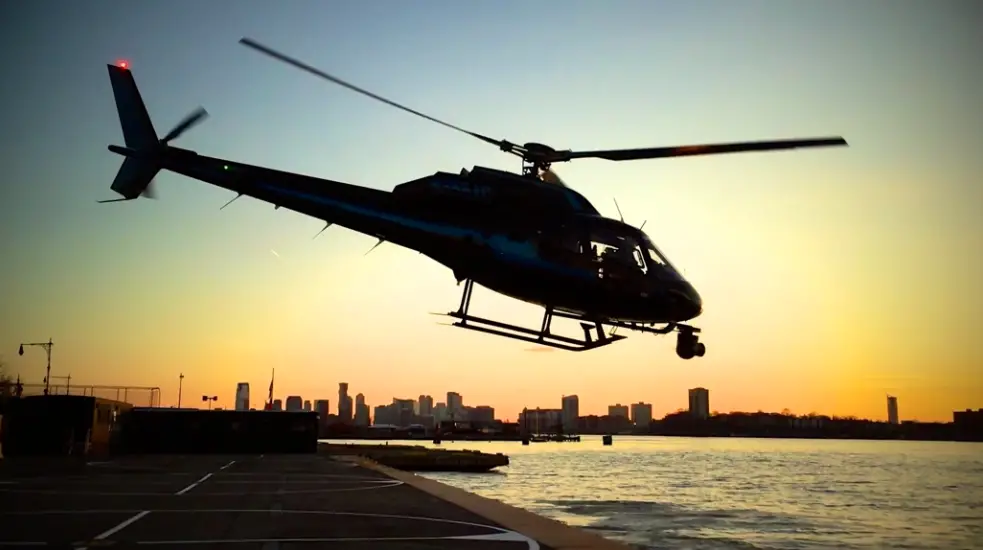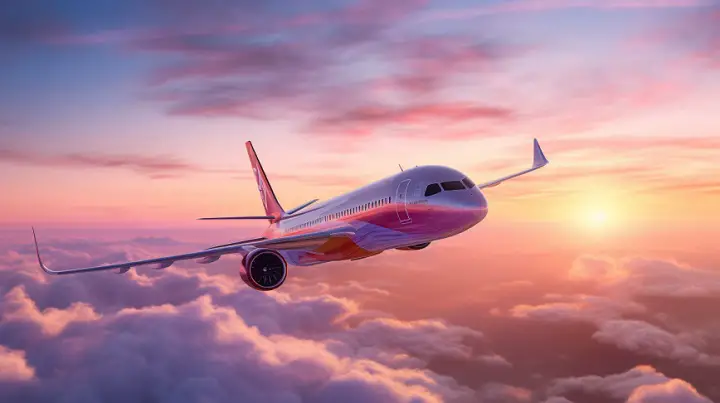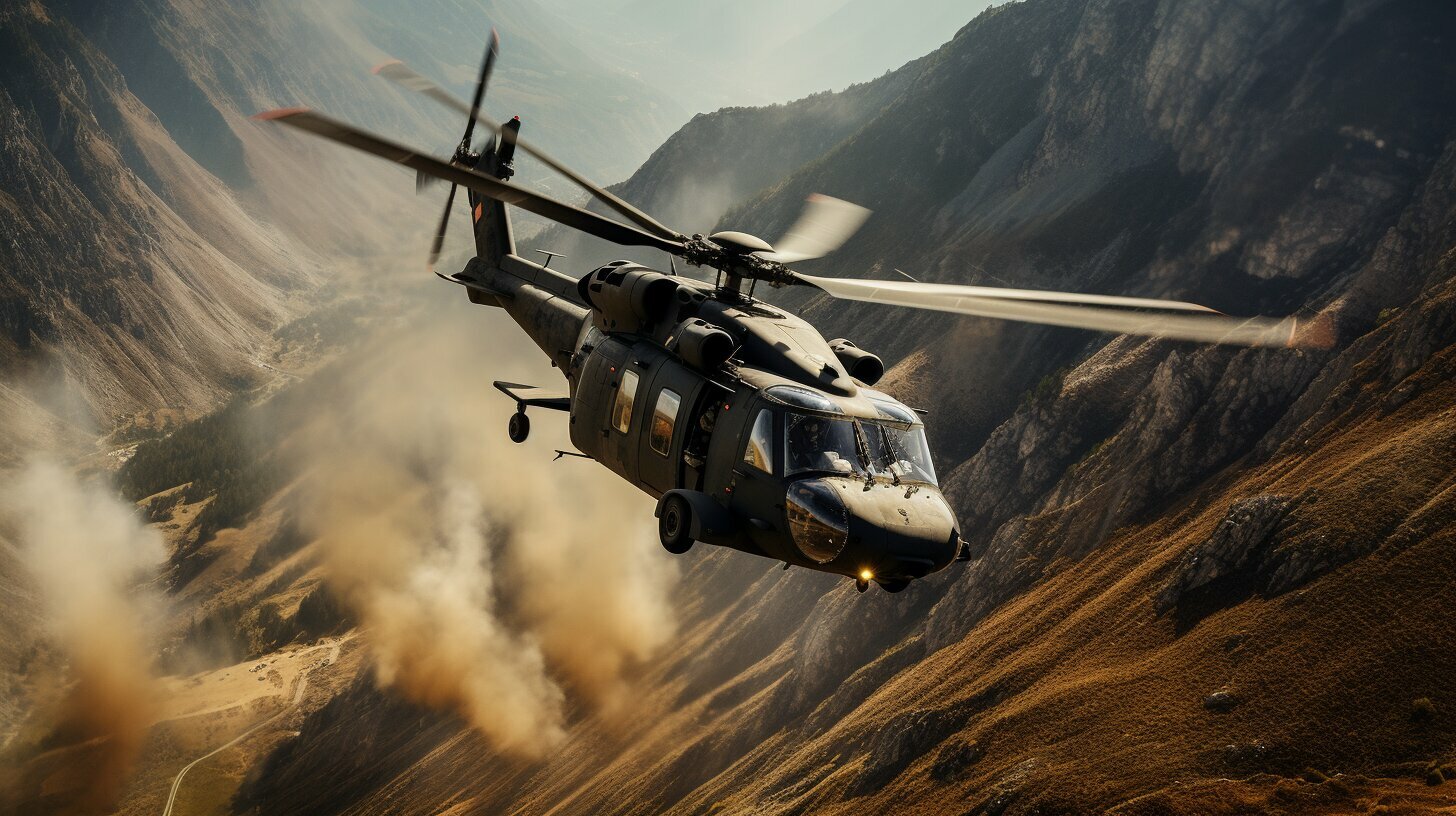
Flying Fixed Wing Vs. Helicopter – Which Is A Better Career Choice?
In the ever-evolving world of aviation, aspiring pilots are faced with a crucial decision: to pursue a career flying fixed-wing vs. helicopter flying. This choice can significantly impact one’s professional journey and job satisfaction in the long run.
In this article, we will delve into the critical differences between these two exciting paths, exploring flight characteristics, training requirements, job opportunities, salary, and benefits – all to help you make an informed decision for your future.
Comparison Of Fixed Wing Aircraft Vs. Helicopter Flying
Fixed-wing and helicopter flying are two distinct types of aviation with differences in flight characteristics, training requirements, job opportunities, and salary ranges.
Key Differences In Fixed-wing Aircraft Vs. Helicopter
In this section, we will explore the key differences between fixed-wing aircraft and helicopters.
| Aspect | Fixed-Wing Aircraft | Helicopter |
|---|---|---|
| Flight Characteristics | Fixed-wing aircraft rely on forward motion to generate lift, requiring a runway for takeoff and landing. | Helicopters generate lift through their rotor blades, allowing for vertical takeoff and landing, as well as hovering capabilities. |
| Types of Aircraft | Fixed-wing aircraft include a diverse range of aircraft, such as commercial jets, turboprops, and light single-engine airplanes. | Helicopters are primarily rotary-wing aircraft, with a limited number of models compared to fixed-wing aircraft. |
| Speed and Range | Fixed-wing aircraft generally travel at faster speeds and can cover longer distances without refueling. | Helicopters usually have slower cruising speeds and a shorter range compared to fixed-wing aircraft. |
| Maneuverability | Fixed-wing aircraft have limited maneuverability due to their reliance on forward motion and fixed wings. | Helicopters have greater maneuverability, with the ability to change direction quickly and hover in place. |
| Operating Environment | Fixed-wing aircraft often require a controlled environment, such as airports with runways, for takeoff and landing. | Helicopters can operate in a wider range of environments, including remote or difficult-to-access locations. |
Advantages And Disadvantages Of Each Type
When it comes to choosing between a career in fixed-wing or helicopter flying, it’s essential to understand the advantages and disadvantages of each type. The following table provides an overview of the pros and cons of fixed-wing and helicopter flying careers, which can help you make an informed decision.
| Fixed Wing | Helicopter | |
|---|---|---|
| Advantages |
|
|
| Disadvantages |
|
|
It’s important to weigh these advantages and disadvantages when deciding between a fixed-wing or helicopter-flying career. To make the best choice for you, it’s essential to consider personal preferences, job market analysis, training costs, potential for career growth, and work-life balance considerations.
Training And Licensing Requirements
Training and Licensing Requirements play a crucial role in determining aspiring pilots’ career paths, whether they fly fixed-wing aircraft or helicopters. To make an informed decision, it is important to understand the nuances and differences between the two. Here are the key points to consider:
Age requirements: Both fixed-wing and helicopter licenses require a minimum age for different levels of certification – 17 for Private Pilot License, 18 for Commercial Pilot License, and 23 for Airline Transport Pilot License.
Flight hours: A certain number of flight hours need to be logged in each type of aircraft before qualifying for a license – more hours are generally required for airplane pilots (1,500 hours) compared to helicopter pilots.
Written, oral, and practical exams: Aspiring pilots must pass written, oral, and practical exams as part of their training and licensing requirements.
R-ATP (Restricted-Airline Transport Pilot) license: This is available for graduates of FAA-approved bachelor and associate degree programs who haven’t yet met the age requirement or completed enough flight hours.
FAA-approved programs: These specialized educational programs provide thorough theoretical knowledge and extensive practical experience needed for certification in either fixed-wing or helicopter flying.
Cost of training: Obtaining a license for fixed-wing piloting tends to be more affordable than that of helicopter piloting due to factors such as fuel costs and aircraft maintenance expenses.
Transitioning from one type of aircraft to another: If a pilot decides to switch from flying fixed-wing aircraft to helicopters or vice versa, it requires additional certifications and substantial flight time specific to the new category.
Building flight experience: To get a job in aviation, both airplane and helicopter pilots need to accumulate flight hours by undertaking various tasks such as instructional flights or recreational flying activities.
Continuous learning: Professional development through advanced training like instrument ratings, multi-engine certifications, and type ratings is essential for career growth and stability.
Pilot qualifications: Apart from the licensure requirements, pilots must possess good physical health, strong communication skills, and a professional demeanor to succeed in the fast-paced world of aviation.
Job Opportunities And Demand
The demand for pilots in the aviation industry is constantly growing, and the job opportunities for fixed-wing and helicopter flying are expanding. Fixed-wing pilots have more job opportunities in commercial aviation, including airlines and cargo transportation industries.
On the other hand, helicopter pilots have a variety of options that include search-and-rescue missions, emergency medical services, firefighting operations, or even law enforcement agencies.
With increased demand from specialized fields such as aerial photography or agricultural spraying services to name a few, it’s not just traditional roles like sightseeing tours anymore.
Salary And Benefits
When comparing the salary and benefits of fixed wing and helicopter pilots, it is essential to consider the various factors that influence these aspects, such as the type of job, location, and years of experience. Here’s an overview of the salaries and benefits associated with both fixed wing and helicopter flying careers:
| Aspect | Fixed Wing | Helicopter |
|---|---|---|
| Average Starting Salary | $35,000-45,000 | $25,000-69,700 |
| Average Salary (5 years of experience) | $60,000-80,000 | $70,000+ |
| Average Salary (10+ years of experience) | $150,000-250,000+ | $174,000+ |
| Benefits | Health insurance, retirement plans, flight benefits, paid time off | Health insurance, retirement plans, flight benefits, paid time off |
| High Paying Jobs | Airline pilot, corporate pilot, cargo pilot | Offshore oil and gas pilot, emergency medical services pilot, firefighting pilot |
Benefits Of A Career In Fixed Wing Flying
Here are a few key benefits of choosing a fixed-wing flying career:
More Diverse Job Opportunities
A career in fixed wing flying offers individuals more diverse job opportunities than helicopter flying. While both careers offer a range of exciting and challenging roles, fixed wing pilots have options to work for major airlines, regional carriers, cargo transportation, charter flights, business aviation, or become flight instructors.
On the other hand, helicopter pilots often specialize in specific missions such as rescue operations, air ambulance services, few specialized commercial operations, or law enforcement support. However, these jobs may be limited in availability compared to the broader range of opportunities available to fixed-wing pilots.
Higher Salaries And Benefits
One of the benefits of a career in fixed-wing flying is higher salaries and better benefits. Compared to helicopter pilots, those who fly fixed-wing aircraft generally earn more due to diverse opportunities, pilot shortages, and intense demand for such pilots.
Additionally, many airlines offer their employees excellent health insurance, retirement plans, and other perks that can make this career path both financially lucrative and mentally rewarding.
In contrast, helicopter pilots may not have diverse opportunities at first, but they also have higher earning potential over time due to increased demand for specialized missions such as medical transport or firefighting operations.
Furthermore, many companies offer their helicopter pilots various allowances, such as hazard pay for flying into dangerous areas like war zones meaning they can command high hourly rates even early on in their careers.
Potential For Advancement And Growth
A career in fixed-wing flying offers promising potential for advancement and growth. With experience and training, fixed-wing pilots can also move up the career ladder into management positions or advanced roles such as test piloting or aviation safety specialists.
Also Read: How To Become An Airline Pilot?
Benefits Of A Career In Helicopter Flying
As a helicopter pilot, you can enjoy these key benefits:
Ability To Gain Immense Experience By Flying In Remote Or Difficult-to-Access Areas
One of the primary benefits of a career in helicopter flying is the opportunity to fly in remote or difficult-to-access areas. These invaluable flying experiences will later make you highly qualified and ideal for job missions such as aerial surveys, firefighting operations, natural disaster relief efforts, and search-and-rescue missions, as well as several specialized military operations.
Increased Demand For Specialized Missions
One key benefit of a career in helicopter flying is the increased demand for specialized missions. Helicopter pilots are often called upon to perform vital tasks such as search and rescue operations, firefighting, and emergency medical transport in remote locations where access by fixed-wing aircraft is impossible or challenging.
Additionally, the military relies heavily on helicopters for transporting troops and equipment during combat missions. These specialized missions require highly trained pilots with exceptional skills and experience to execute them safely and efficiently.
Furthermore, your experience of maneuvering helicopters around obstacles such as trees or buildings opens up the door to new emerging opportunities in aerial photography and videography, infrastructure inspection, urban tourism, air ambulance services, and more.
Potential For Job Satisfaction And Fulfillment
A career in helicopter flying can offer great job satisfaction and fulfillment for those who enjoy adventure, challenge, and unique opportunities. The personalized flying experience provided by helicopters can be particularly rewarding for pilots with a passion for serving others or exploring new destinations.
Factors To Consider When Choosing A Career Path
Consider personal preferences, job market analysis and demand, training and education costs, potential for career progression, and work-life balance when choosing between a career in fixed-wing or helicopter flying.
Personal Preferences And Interests
When it comes to choosing a career path as a pilot, personal preferences and interests can play a significant role in determining whether fixed-wing or helicopter flying is the better choice. Here are some personal factors to consider:
Comfort level: Some aspiring pilots may find that they feel more at ease in the cockpit of an airplane, while others may prefer the unique challenges and excitement of controlling a rotorcraft.
Type of missions: Think about what type of flying missions you’re most interested in pursuing. Fixed-wing aircraft are often used for commercial travel or cargo transport, while helicopters are frequently employed for emergency medical services, search and rescue operations, or law enforcement activities.
Preferred work environment: Do you prefer flying over mountains, oceans, or cities? Or do you thrive in remote and challenging terrains?
Lifestyle considerations: Different types of pilot jobs may have different lifestyle implications (e.g., travel schedule, work hours). Consider how these factors will fit with your personal lifestyle goals and priorities.
Overall career goals: Finally, take into account your broader career aspirations – where do you see yourself five or ten years down the line? Which type of piloting will help best serve those goals?
Ultimately, your personal preferences and interests should be among the key drivers when choosing between fixed-wing and helicopter flying as a career choice.
Job Market Analysis And Demand
The aviation industry continues to experience a strong demand for pilots, whether in fixed-wing or helicopter flying. According to the Bureau of Labor Statistics, the employment growth of commercial pilots is expected to increase by 5% until 2029.
Additionally, with an increasing number of retirements projected in the coming years, many airlines and companies are seeking new talent across both sectors. Pilots who specialize in unique missions, such as flight nurses transporting patients who require immediate medical attention, also see steady demand for their services.
Training And Education Costs
One of the most critical factors to consider when choosing between a fixed-wing or helicopter-flying career is the cost of training and education. Flight training costs vary widely depending on the type of aircraft and flight school attended.
Generally, becoming a helicopter pilot tends to be more expensive than a fixed-wing pilot due to the additional complexity involved in operating rotary-winged aircraft.
Furthermore, it’s crucial to note that obtaining any kind of commercial pilot certification can be quite costly due to accruing sufficient flight hours as required by aviation regulations.
Potential For Career Progression
One of the significant factors to consider when choosing a career path between fixed-wing and helicopter flying is the potential for career progression. Both careers offer opportunities for advancement, but they differ in terms of available roles and responsibilities as pilots gain experience.
For fixed-wing pilots, there are more diverse job opportunities ranging from commercial airlines, and corporate business aviation to government organizations or military operations.
On the other hand, helicopter pilots can advance from entry-level positions like tour operators or emergency medical service (EMS) pilots to more specialized missions such as firefighting, power line inspections, or search-and-rescue operations.
Helicopter pilots that want to move up within their field may pursue additional ratings in specific areas such as external load operations, long-line rescue techniques, and night vision goggle (NVG) operations.
Work-Life Balance
When it comes to choosing a career in flying, one of the critical factors to consider is work-life balance. While both fixed-wing and helicopter flying can provide flexible schedules and opportunities for travel, the job demands can vary significantly.
For instance, fixed-wing pilots generally have more extended periods away from home due to longer distances covered by their aircraft. Additionally, some industries such as EMS require 24/7 operations with rotating shift schedules, making it difficult to maintain a healthy work-life balance. Aspiring pilots must research various industries’ expectations fully and weigh them against personal preferences before deciding on a career path.
Final Thoughts
So, which is the better career choice, fixed-wing pilot vs. helicopter pilot? The choice between pursuing a career as a fixed-wing pilot or a helicopter pilot is complex. This decision, far from being one-dimensional, involves a series of intricate considerations that extend beyond mere personal preference.
It’s about aligning your aptitudes and ambitions with the distinct challenges and rewards of each of these distinct aviation sectors. The decision involves a comprehensive job market analysis, understanding the potential for professional growth, and carefully evaluating work-life balance. Yet, it’s also about deeper introspection, understanding your preferences, tolerance for risk, and long-term career goals.
In short, there isn’t a one-size-fits-all approach to this decision. Also, the decision between the two careers is not a mere conclusion but the onset of a meticulous, self-informed professional journey.




